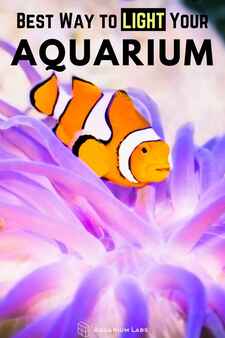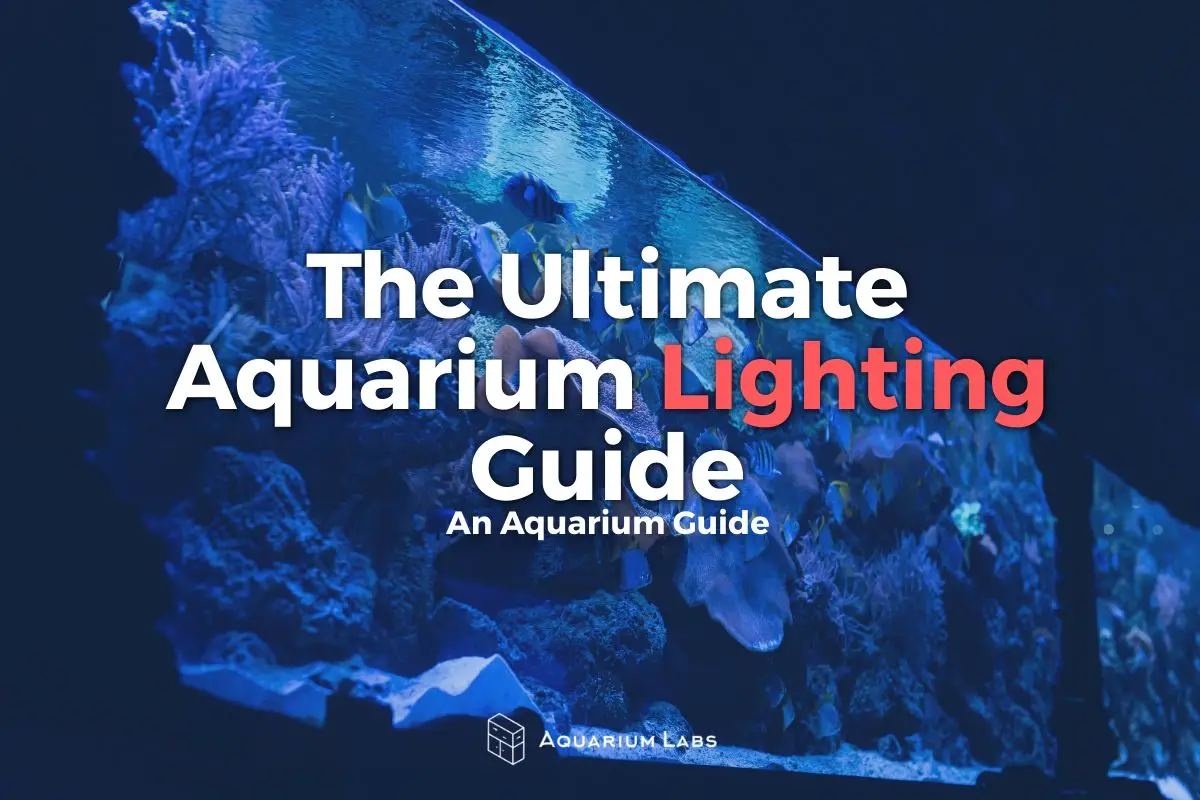You may be wondering, do fish tanks need aquarium lights? The answer is yes. Aquatic life forms experience a fluctuating amount of darkness and light in their natural habitat. That’s why, when building a healthy aquarium, you must mimic the natural lighting conditions of the environment, to guide your fish to healthy life and development.
Because aquarium lighting is so important to the health and hygiene of your fish tank, you should research all your options, so you choose the right spectrum of light.
In our guide below, we’ll go into the requirements of a healthy aquarium and the right bulbs needed to create one.
Why Is Aquarium Lighting So Important?
Aquarium lighting is an investment nobody should neglect. Even for a beautiful fish tank, if the tank lighting isn’t right, the plants and fish won’t develop as they would in their natural environment.
When shopping for lighting, pay close attention to the color spectrum and needs of your specific aquatic life. Freshwater and saltwater fish and plants have different needs, so use our saltwater and freshwater guide below to know what to look for.
Light Spectrum and Intensity
The most important factors to lighting are light spectrum and light intensity. Spectrum and intensity depend on varying factors such as:
- Water depth
- Water and air clarity
- Temperature
When choosing how to light, the main goal for your freshwater or saltwater reef fish tank is to make your aquatic pets feel like they’re in their natural environment. You have more flexibility with fish than plants when doing so.
When describing the spectrum of aquarium light, bulbs are scaled by a Kelvin, or K, rating. This K-rating tells us the color temperature of the bulb. Lower K-rated bulbs give off a warmer, reddish hue. Bulbs with a higher K-rating gives a cooler, blue light.
Daylight around noon would equal about 5,500K. Most fish tanks typically range between 5,000 to 20,000 Kelvin.
At sea level, we measure sunlight at around 5,500K. A bulb with this same K-Rating would be suitable for a shallow freshwater water aquarium or reef. The deeper the natural habitat of your aquatic life, the higher K-Rating bulbs you’ll need to light your freshwater fish tank or saltwater reef.
Aquarium Lighting Guide

Here’s our full aquarium light bulb guide featuring the properties, pros and cons, and compatible uses for each of the different types of bulb style. Use this guide as a reference when creating the appropriate lighting for your freshwater fish tank or saltwater reef.
Incandescent Bulbs
These bulbs last for 2 to 4 months. They come in a range of 7-25 watts. The K-Rating depends on the color of the bulb.
Pros:
- Inexpensive
- Available in many colors
Cons:
- Narrow spectrum
- Low-light intensity
- Gives off heat
Verdict
These are the most basic bulbs in our lighting guide. Incandescent bulbs are great for a small, freshwater fish tank or starting a beginner’s aquarium.
Standard Fluorescent Bulbs
These bulbs come in a range of 15-40 watts and a K-Rating of 3,000-20,000K. Actinic bulbs are available in this style.
Pros:
- Come in a variety of colors and sizes
- Efficient
- Don’t give off heat
- Inexpensive
Cons:
- Incompatible with photosynthetic plants
Verdict
Use standard fluorescent bulbs for a freshwater tank and saltwater reef. They also work in a reef with a low-light variety of corals or aquarium fish in cold water.
Compact Fluorescent Bulbs (Versions of Standard Fluorescents with Higher Light Output)
These bulbs range from 10-130 watts and a K-Rating of 5,000-10,000K. They last 12-28 months and are available as actinic bulbs.
Pros:
- Long-lasting
- High light intensity
- Wide spectrum
Cons:
- Can produce high heat and require chilling equipment
Verdict
Use compact fluorescent bulbs for a reef or fish tank that’s less than 24 inches deep. These are compatible with freshwater planted fish tanks.
T-5 HO (High Output) Fluorescent Bulbs
T-5 HO bulbs range from 24-54 watts and a K-Rating of 6,000-11,000K. They are available as actinic bulbs.
Pros:
- High-intensity
- Small
- Cool temperature
Cons:
- Incompatible with aquariums deeper than 24 inches
Verdict
Use T-5 HO bulbs in a freshwater planted aquarium and reef less than 24 inches deep.
VHO (Very High Output) Fluorescent Bulbs
VHO bulbs range between 75-165 watts and have a K-Rating of about 10,000. They last 4-18 months and are available as actinic bulbs.
Pros:
- Available in many sizes
Cons:
- Produce high heat
- May require cooling equipment
Verdict
Use VHO bulbs for freshwater planted aquariums and reefs less than 24 inches deep.
Metal Halide Bulbs
These are the highest K-rated bulbs in our reef lighting guide. They range between 70-1,000 watts and 4,000-20,000 Kelvin. They last between 6 and 18 months.
Pros:
- Intense light
- Wide spectrum
- Good for high-light aquariums
Cons:
- High-heat
- May require cooling equipment
- Give off UV radiation
- Require special handling to avoid injury
Verdict
Metal halide bulbs are the only options in our guide that require added caution when handling. These are suitable for a freshwater aquarium or reef deeper than 24 inches. They work well with invertebrates and photosynthetic coral reefs.
LED (Light-Emitting Diode) Bulbs
LEDs range between .05-5 watts. They last up to 50,000 hours. The K-Rating depends on the array of LED bulbs.
Pros:
- The most energy-efficient option
- Reduce the amount of aquarium maintenance
Cons:
- Sensitive to heat
- Require ventilation
Verdict
Of all the bulbs in this guide, LED lights are the most efficient available. They work as the main source of light for all saltwater marine and freshwater aquariums. That includes a coral reef tank. Use our guide to explore the wide range of LED lighting options available on the market.
Final Thoughts
Overall, the best freshwater or saltwater LED lights will emit a consistent amount of light in the entire tank. As stated in our guide, using too little light can stunt your reef fish and aquatic plant growth. Alternatively, too much light will result in your fish tank growing an excess of algae, which increases the maintenance required to keep a healthy fish tank.
Since the change of seasons guides natural light changes, the lighting in your fish tank will need to change as well. Consider seasonal changes, temperature, light temperature, and intensity when crafting the perfect lighting, whether it’s a saltwater or freshwater tank.
You guarantee the quality of life and the long-term well-being of your fish when you take the time to find appropriate lighting. Using our light guide, you can create the best home for your aquarium plants and fish that’s safe and beautiful.
Recent Related Articles:
- How Long Should Aquarium Lights Be Left On?
- AquaIllumination AI Prime 16 HD Reef Aquarium LED Product Review
- Current USA Orbit Marine Aquarium LED Light Review
- Kessil A80 Light Review
- Do It Yourself Aquarium Guide
- How to Light a 125 Gallon Aquarium

